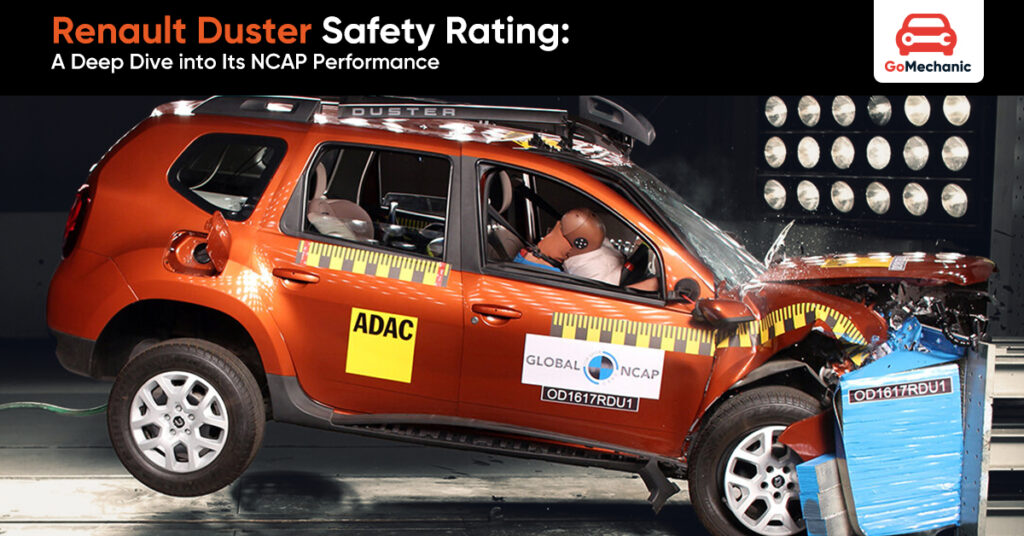Everyone loves a good SUV. They’re solid, reliable, and give you the feeling that you’re ready to conquer anything whether a smooth highway, the uncharted dirt road, or even a pothole-riddled alleyway. The Renault Duster hits a lot of right notes as an SUV. It’s practical and functional. Moreover, it comes in a suitable budget that most Indian families would willingly pay.
But here’s the thing: Do we talk enough about its safety? Sure, it looks tough, but when it comes down to it, when you’re behind the wheel, dodging traffic, trying to get somewhere in one piece—does it really hold up? Does it keep you protected when the rubber hits the road?
In this blog, we’re going to explore the Renault Duster’s safety rating—focusing on the NCAP score. We will discuss every safety parameter so that you can determine whether it’s worth the ride, or if it’s just another vehicle that looks good on paper.
Read More: Tata Nexon EV Safety Rating: A Deep Dive Into Its NCAP Performance
What is Global NCAP?
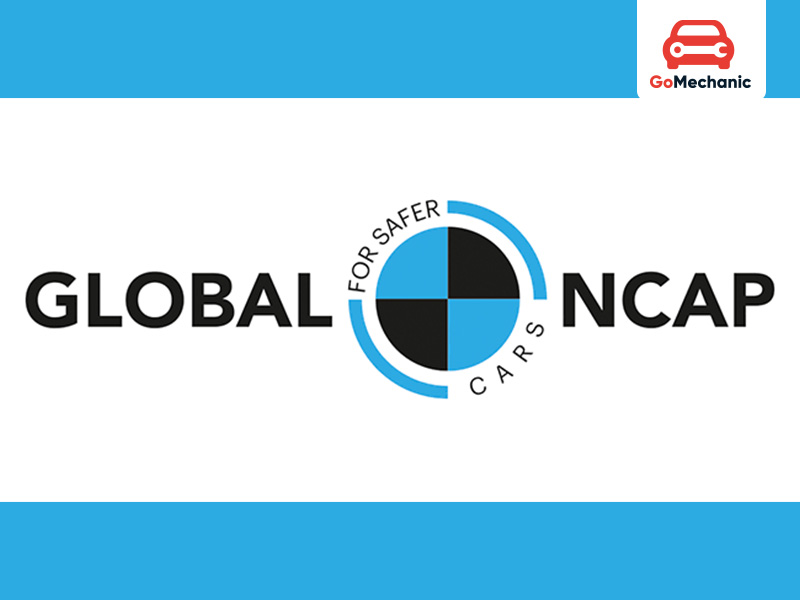
Before diving into the specifics of the Renault Duster NCAP rating, you need to understand that Global NCAP is the independent body that assesses a vehicle’s safety. Global NCAP assesses every vehicle of certain parameters that determine how safe a car is to drive on roads. They don’t just put a vehicle in a crash test instead they rigorously test how cars perform in real-world crash scenarios—frontal impact, side impact, and even child occupant protection.
Based on tests, they release a star rating from 0 to 5 that tells you how well the vehicle will fare if things go south on the road. The higher the rating meaning the safer it is.
Renault Duster NCAP Rating: What the Scores Say
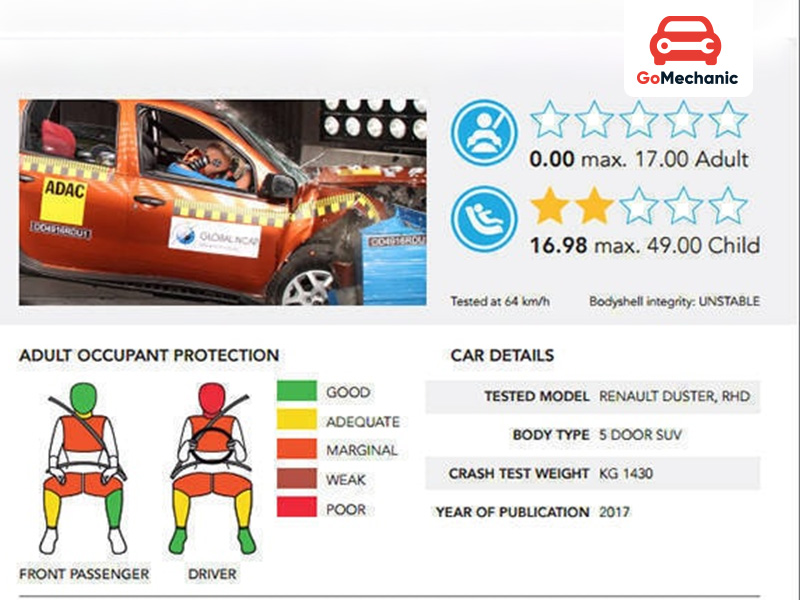
Alright, let’s talk numbers. The Renault Duster did okay. Not stellar, not bottom-of-the-barrel, but right in the middle. And that’s good, right? Let’s break it down.
Adult Occupant Protection
The Duster scored 3 stars for adult occupant protection. That’s respectable. It’s not going to win any awards for luxury or high-end safety tech, but it holds its ground.
- Frontal Crash Test: In a head-on collision, the Duster does a decent job. The cabin remains intact, and the head, neck, and chest areas are well-protected. The leg protection is good, but the knee area? Not so much. There’s some room for improvement there.
- Side Impact Test: The Duster holds its own here, but let’s be honest—it’s not going to fare well against a high-speed side impact. Still, for urban collisions, it’s good enough. Reinforcements in the side panels provide a decent cushion against these types of crashes.
- Body Shell Integrity: This one’s critical—stable body shell. What that means is that the structure of the Duster holds up. The body doesn’t collapse like a cheap tin can. It’s solid. Which is exactly what you want when it comes to keeping the cabin intact in an accident.
Child Occupant Protection
Now, we get to the part that really matters if you’re thinking about family safety.
- 18-month-old Dummy: It scored well for head protection in a rearward-facing child restraint system (CRS). But when it came to chest protection, well, it left a little to be desired. You’ll still want to be cautious here.
- 3-year-old Dummy: Again, decent protection, but some areas—like the chest—didn’t fare so well.
- ISOFIX Anchors: Here’s a plus—the Duster comes with ISOFIX anchors, which is the modern standard for child seat safety. It’s not perfect, but it’s certainly better than most.
Check Out: BMW X1 Safety Rating: Crash Scores, Features, and the Real Story
Safety Features in the Renault Duster
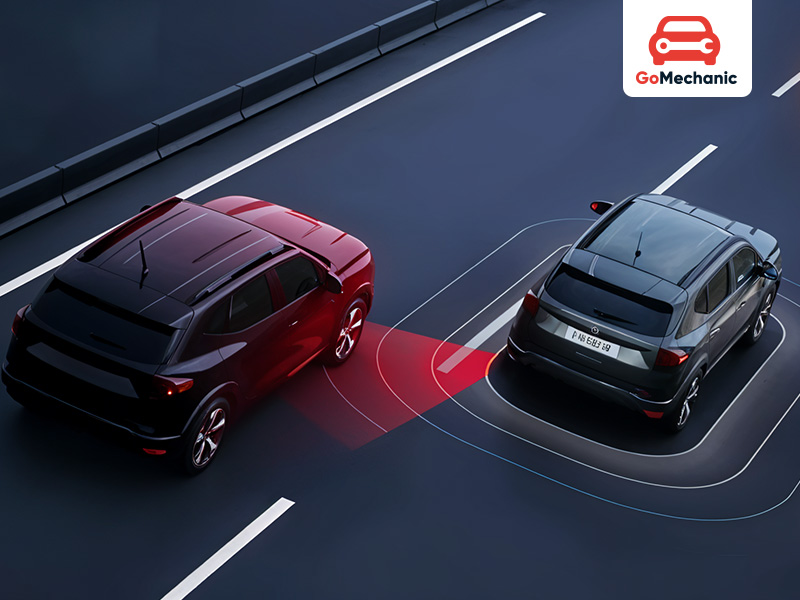
Now, let’s talk about the features that make these safety scores possible. The Duster is no slouch in this department, though it’s worth mentioning that the base variant doesn’t come with all the high-end safety features. Here’s what the Duster’s packing:
- Dual Front Airbags: Essential for frontal impacts.
- ABS with EBD: For braking in emergencies.
- Rear Parking Sensors: Not life-saving, but helpful nonetheless.
- Electronic Stability Program (ESP): Available in higher trims. This one’s crucial for keeping the car from sliding around corners or in bad weather conditions.
- Driver and Passenger Side Airbags: Again, higher trims only.
So, the base model gives you the essentials, but if you want the full package of safety features, you’ll have to look at the higher trims.
A Look at the Tech Sheet: Specifications
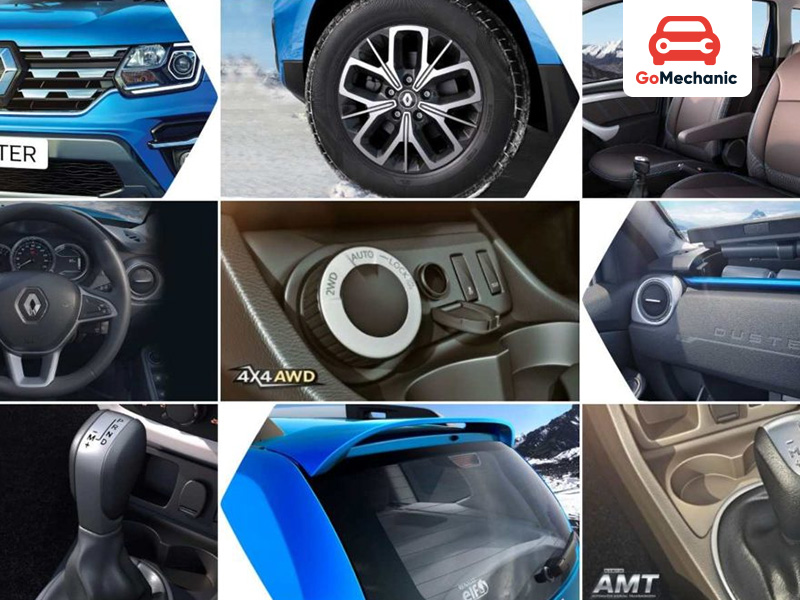
The Renault Duster isn’t just about safety; it’s also got some decent tech under the hood. While it’s not the flashiest SUV out there, it’s solid in terms of performance and practicality.
| Specification | Renault Duster (2025) |
| Engine Type | 1.5L Petrol / Diesel |
| Power Output | 106 PS |
| Torque | 142 Nm |
| Transmission | 5-speed manual / AMT |
| 0-100 km/h | ~12 seconds |
| Ground Clearance | 205 mm |
| Fuel Tank Capacity | 50 Liters |
| Boot Space | 475 Liters |
The Duster’s engine options, ground clearance, and fuel efficiency make it a practical choice for Indian roads. Sure, it might not break any speed records, but it does what it’s supposed to do—get you where you need to go reliably.
Also Read: Maruti Suzuki Eeco Safety Rating By Global NCAP 2025
What the Safety Rating Means for You
Let’s keep it simple—the Renault Duster isn’t going to make any headlines for its safety features. No, it’s not a contender for “Best Family SUV.” But, hear us out—it does just enough to make you feel like your car’s not going to crumble when you need it to stand tall.
If you want a ride that’s dependable and won’t drain your savings, the Duster holds its ground. Sure, it’s not the one that’ll leave everyone in awe, but it doesn’t disappoint either. For families who aren’t trying to sell a kidney to afford a car and still want some peace of mind, the Duster is a pretty solid option. It’s not perfect, but for the price? It’s pretty damn decent.
Final Thoughts
The Renault Duster isn’t going to wow you with luxury or high-tech bells and whistles, but it doesn’t need to. What it does well is staying strong in the safety department. The 4-star NCAP rating for adults and the 3-star rating for children’s protection might not be groundbreaking, but it’s enough to ensure you’re not gambling with your safety. If you’re looking for a vehicle that doesn’t break the bank but can handle Indian roads without making you feel like you’re in a tin can—this is the one.

